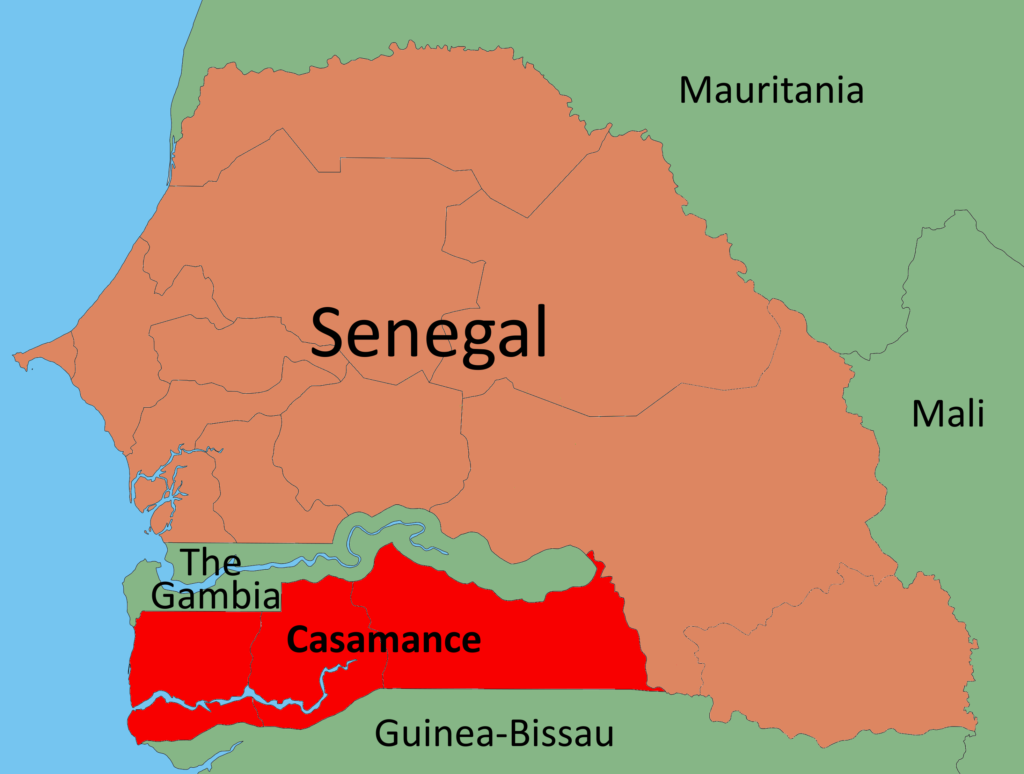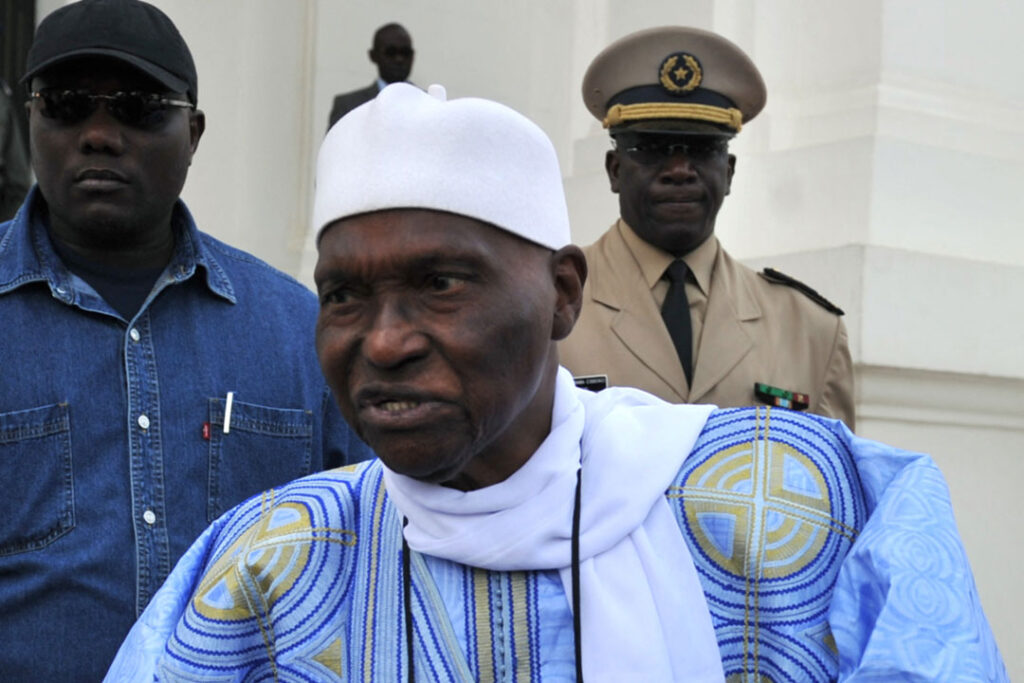Senegal: Movement of Democratic Forces of Casamance
By allowing international mediation, Senegal’s new president has brought fresh hope to one of Africa’s longest-running separatist conflicts
By Ricci Shryock
As Salatou Sambue travelled around Senegal’s southern Casamance region in 2008, meeting with village leaders and discussing efforts to preserve local fishing stocks, he was constantly worried the West African government would think he was actually plotting an insurgency.
“Every time we gathered people together, we were faced with the question: ‘Is the state going to think that we want to rebel against it?’” he said a few years later, after his conservation group, Kawanana, was more established.
His fear was well founded. After all, this southern region, covering an area of 30,00 square kilometres largely separated from the rest of the country by the Gambia, is home to one of Africa’s longest-running conflicts. Here the Movement of Democratic Forces of Casamance, a separatist group known by its French initials, MFDC, has been fighting for independence for more than three decades.
Even though Mr Sambue’s goal is to conserve the area’s natural resources, which support industries such as fishing and agriculture, the Senegalese government and the rebels within the MFDC can take a lesson from organisations such as his, Mr Sambue says.
“What we did was to create a conservation community founded on new rules that did not exclude anyone and made sure there was no room for conflict,” he says. “We did the opposite of what was actually happening in Casamance. I told everyone that the initiative could change our way of life in Casamance. Fishermen and farmers were suffering. And suffering brings pain, which leads to conflict. We learned that it is possible to end conflict on a local scale before ending it on a regional scale.”

The MFDC was originally formed as a political party in 1947, when Senegal was still a French colony. The group claims that after the West African nation gained independence in 1960, the country’s first president, Léopold Senghor, promised Casamance leaders their region could have independence from Senegal if they first spent 20 years as part of the newly formed country. In 1982, when it became clear that the promise would not be honoured, the MFDC was reborn in its present incarnation as a rebel movement.
The movement has between 1,200 and 2,000 members, according to most estimates. It accuses Senegal’s administration of neglecting Casamance by not investing enough in schools, clinics, roads and other infrastructure for its 1.1m population, according to the most recent census.
Though the insurgency in Casamance is considered low-level, with sporadic bouts of violence and kidnappings flaring up on average just a few times a year since 1982, the conflict has taken its toll on local residents. Martin Evans, a senior lecturer in International Development at the University of Chester who has been studying the conflict for nearly 15 years, estimates that combat-related fatalities total somewhere between 3,000 and 5,000 over the past three decades, with more than 60,000 residents displaced.
But today, both analysts and civil society leaders are expressing new optimism that the conflict could finally be making a turn towards peace.MrEvans says most of that optimism is a result of the change in government in Senegal in 2012, after Macky Sall won the presidential election and ousted Abdoulaye Wade, who had run the country since 2000.
“I really do think he [Sall] has brought a fresh approach,” Mr Evans says. “I think the biggest single change was his willingness to allow international mediation. That was really a steep change from Wade, who very much tried to construct the problem as a domestic issue and was quite hostile towards any foreign influence as he saw it, and I think ultimately that was unhelpful.”
In December 2012 the Community of Sant’Egidio, an Italian Catholic charity, led the successful negotiations in Rome for the release of eight Senegalese soldiers who had been kidnapped and held hostage. “It’s showing a willingness to open up to the world,” says Mr Evans of President Sall’s receptiveness to outside mediation. “And showing ‘We’re not perfect, we have a conflict in our backyard.’”
Malick Djiba, from the Cooperation Institute for Development in Casamance, agrees that the new president offers hope. “Very little happened under Wade’s government,” he says. “Macky Sall’s government is more serious about solving the problems in Casamance, but it’s a two-way effort and for now it seems that we are the only ones taking action,” he continued, referring to efforts in the south.
Mr Sall’s administration established a “reflection group” in early 2013, comprising the rebels, government officials and civil society leaders, to develop proposals the government can offer the MFDC, and vice versa.
The group had their first meeting in June in Ziguinchor, the regional capital of Casamance. One member of the group, Ibrahami Gassama, a local radio journalist, says they have spoken with MFDC leaders to discuss what alternatives to independence the rebels would accept. The Senegalese government, however, has clearly stated that independence is not a realistic option. He adds that one of the biggest obstacles to peace is that the MFDC itself is split into factions that cannot agree on an ideal outcome.
One reason a 2004 peace deal under Mr Wade failed was that the government did not work out the terms with the true rebel leadership, says Mr Gassama, a radio journalist based in Ziguinchor. This underscores the importance for the Sall government of ensuring that they negotiate with MFDC leaders who truly speak for the movement.
“That last negotiation [under Wade] was just politics,” Mr Gassama says. “They chose a group that passed as rebels, but they weren’t the real MFDC. The real negotiators have never sat down with the government.”
Mr Evans agrees that one reason the conflict has lasted so long is that the MFDC is not organised enough to work out a proper deal.“The MFDC has never been good at articulating a clear and coherent political message,” he says. “There’s always a certain and sometimes quite pronounced political naïveté there. They’ve got this very strong sense of historical grievance as to how they ended up in Senegal: illegally incorporated into Senegal after independence. They don’t like the Senegalese administration, but thinking about how they would really achieve a real political project and what it would mean – the devil is really in the details.”
The MFDC is split into four groups, according to Mr Gassama. The strongest group is under the leadership of César Atoute Badiate,who commands 80% of the MFDC’s total armed forces, which Mr Gassama estimates at between 1,200-2,000 men. But Mr Gassama insists that just because the insurgency is splintered and small, does not mean the group is not a threat to residents.
“They are not big, but they can be dangerous. They can be like terrorists,” he says. “We don’t see them, they are in the bush, and they can do damage. It’s not a conventional war. Here, it’s the people you don’t see who can prepare their hit in silence and attack people without warning. It’s a surprise. Even your friend with whom you eat and drink tea can be your enemy.”
Mr Gassama admits that he has renewed optimism that peace and improved development can come with the new administration. And if it does, it will not be a moment too soon. “The Casamance is like someone who is sitting next to the rain, but who is dying of thirst.”



